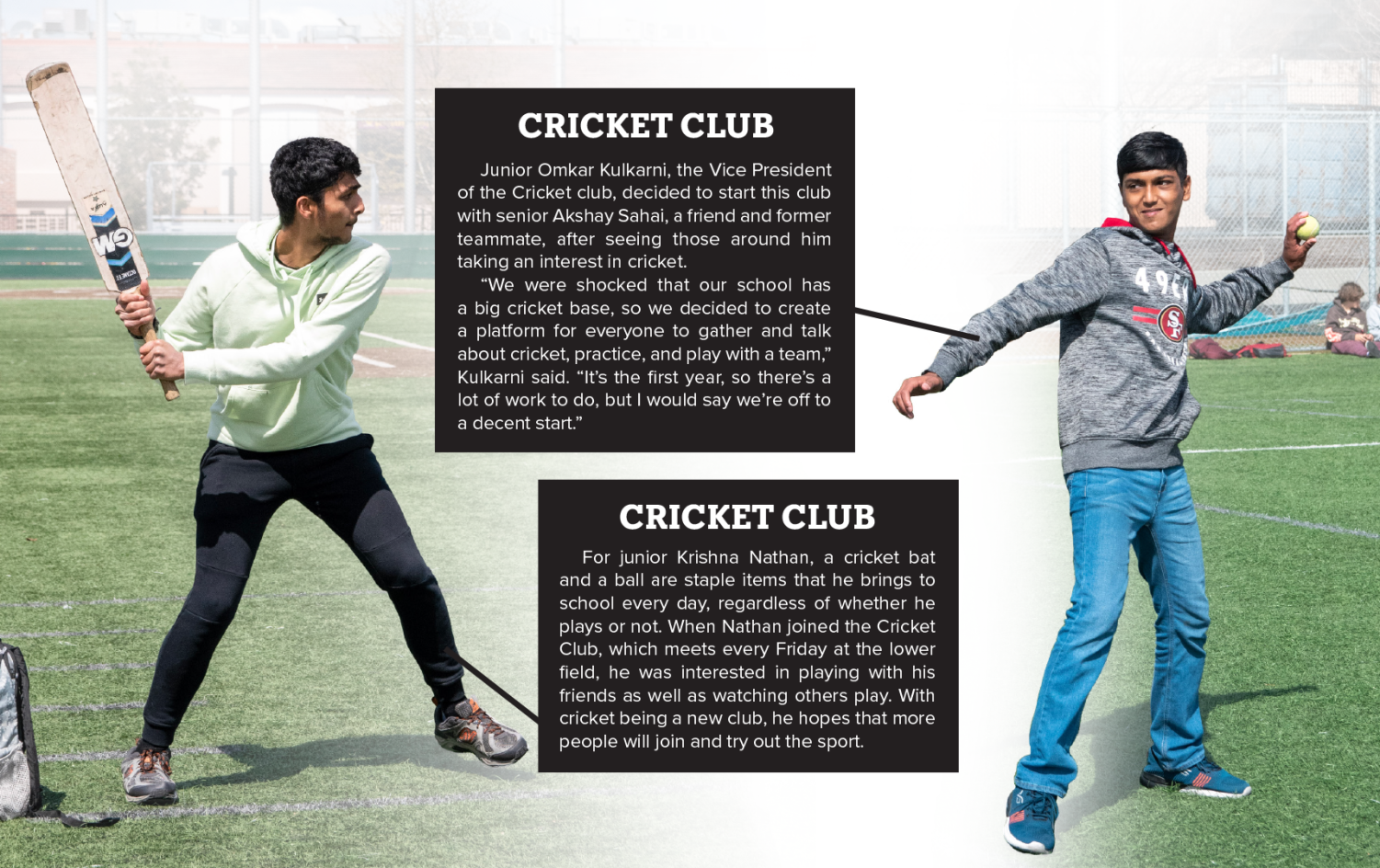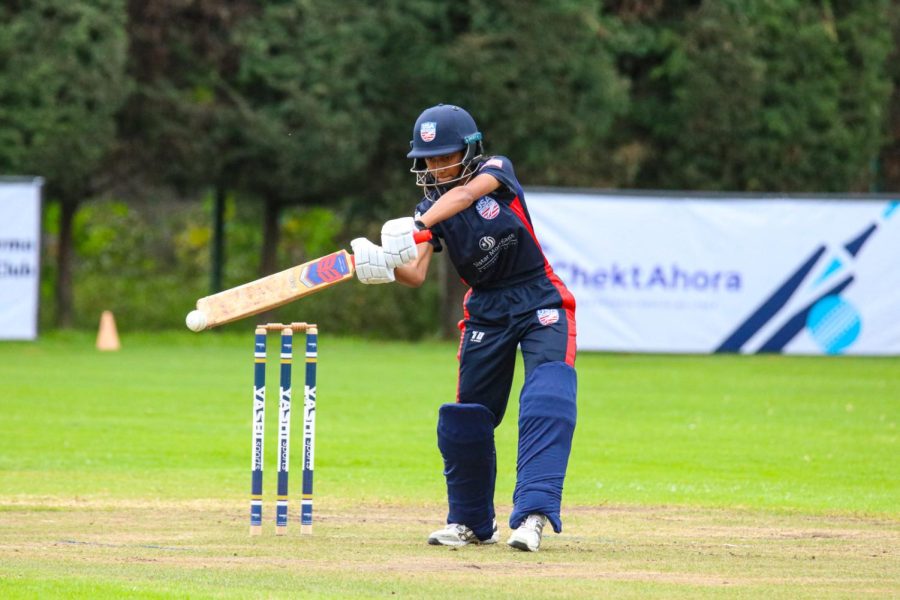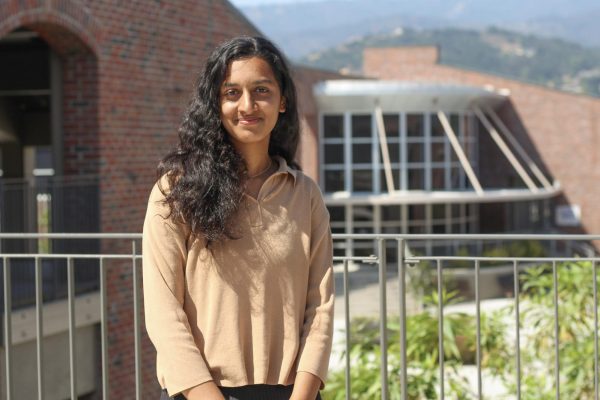Carrying the bat
Exploring how the MVHS community is involved in the world’s second largest sport — cricket
Photo courtesy of Chetnaa Prasad
Senior Chetnaa Prasad is batting in a cricket game. She is a member of the USA Women’s National and Women’s National Under 19 Training groups.
April 26, 2023
“Chetnaa, you got on the team!”
One day in early 2021, senior Chetnaa Prasad heard her dad’s loud voice at 4 a.m., and still in bed, she opened her eyes wondering why she was being woken up so early. Her initial daze and confusion wore off within seconds, and her dad’s words started making more sense — he had received the roster for USA Women’s National and Women’s National Under 19 Training groups through an email, and Prasad’s name was on both.
For Prasad, this was a sigh of relief. All the hard work she had put into cricket since starting in 2016 seemed to have paid off and the six to seven months she had spent going through the tedious selection process, filled with countless games, had come to an end.
“I was grateful because you never really know what the selectors are thinking,” Prasad said. “After [being selected], I had much more of a vision of what I wanted to do because [being on the team] was the first milestone for [me]. [Now,] I can be a professional in this sport, tour the world and go places with different teams and play for different franchises.”
Prasad’s brother was motivated to join a local academy after the 2015 Cricket World Cup, and Prasad followed in his footsteps a year later Prasad played a lot of sports before cricket and first participated in street cricket with her neighbors at the age of 10, an unofficial setup that can she says be adopted by anyone interested in playing.
Like Prasad, MVHS parent Anand Nadathur played many sports during his childhood with the neighborhood children, cricket being most popular. With a group of approximately 10 children ranging from age five to late teens, they would separate into two teams and play in front of their houses.
“I started playing when I was in first or second grade,” Nadathur said. “[Every kid] in that neighborhood [was] part of the team. My brother was playing and then when I was ready to hold the bat, I started to play. Nobody taught me how to hold the bat, I just saw him do [it] and I also did [it].”
Nadathur keeps up with professional cricket games, particularly the Indian Men’s and Women’s Cricket teams’. Junior Omkar Kulkarni also follows the Indian Cricket teams and has been watching since he saw a Men’s India vs. Pakistan game in 2009 when he was three.
“I enjoyed the style of gameplay and the aggressiveness that the players had and the game itself and that’s how I got into it,” Kulkarni said. “I always wanted to do something in sports [and] I found cricket to be the perfect sport to pursue and enjoy. I got interested as soon as I saw it and it was never like ‘I’ll give it a shot,’ it was like ‘I want to do that.’ It’s like a natural instinct.”
Contrary to Men’s Cricket, Prasad says that Women’s Cricket is not as popular and she has come a long way since the start of her cricket career — in her earlier teams, her coaches made her play in the outfield away from the actual gameplay. However, motivated to become involved in bowling and batting, she put in effort to improve and earned herself chances to do that, and says it was not because she was not good enough but because she was a girl that she was underestimated and not given the opportunity to bat and bowl in the beginning. As part of the national team, Prasad meets up with her teammates three to five times a year for tournaments, and has played internationally in Mexico, Zimbabwe and Trinidad and Tobago.
“I’ve learned so much since I got into the national team two years ago, but it’s not a one and done deal,” Prasad said. “You still have to keep working hard even after you make the national team because you can always be dropped. You have to keep upping your skill, you have to keep being good at what you do, you have to keep winning games from the team, and that’s really what matters.”
In addition to the national team, Kulkarni says that more opportunities are becoming available for those who want to pursue a professional career in cricket, such as participating in the Major and Minor Cricket Leagues. Despite the increasing scope for cricket careers, Kulkarni finds that as a high school student, he is not able to commit as much time to the sport as he used to be able to back in elementary and middle school.
Another obstacle that cricket presents is burnout, which Prasad says is inevitable. At one point, she had to bowl a lot and was confined to a couple of techniques, which was the opposite of what she wanted to do — she wanted to try new throws and put different spins on the ball. The differing interests held by her and her coach made her question if she could continue with the sport, especially as she was getting tired from doing the same thing over and over again. However, she realized that she needed to figure out what she wanted to do and find enjoyment in that, instead of doing what others wanted her to do. Questioning why she wanted to continue cricket helped her find a reason to keep pursuing the sport and overcome this internal battle.
“A lot of people take things so seriously when they play sports, [but] I really like playing sports because it’s fun,” Prasad said. “During that [time], there were so many people around me who were instilling in my subconscious that I should be doing this for performance, numbers or stats. I want to win games for my team because I like winning [and] at the end of the day, I just want to have fun doing what I do.”
For Kulkarni, cricket has not only presented playing opportunities but coaching ones as well. Recently, he coached some children at the Cupertino Library cricket field, and saw how the cricket knowledge he had learned from those who were more experienced than him when he was younger allowed him to get better. Now, he teaches children who are newer to the sport. Kulkarni finds that cricket has allowed him to make great memories and gain a multitude of experiences.
“I started off playing when I was nine [and] I’m still friends with those [teammates] ‘til this day because we just had a lot of great experiences on the field,” Kulkarni said. “It’s really exciting and it helps provide a sense of community that other programs might not necessarily provide. Although it’s not part of the school sports programs, I hope that cricket grows to be [more] recognized and [one] that people can pursue and be part of.”




















